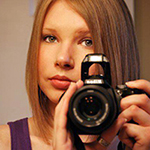 The questions posed this week got me thinking about riddles because they were both curious and challenging. One key difference here is that riddles are usually designed to have one right answer. In the case of situational choices for the selection and implementation of technologies, I don’t think that there always is one right answer. I think that different approaches can be used to achieve different instructional aims, and that the overall goals of teacher, student, institution, and environment need to be taken into consideration.
The questions posed this week got me thinking about riddles because they were both curious and challenging. One key difference here is that riddles are usually designed to have one right answer. In the case of situational choices for the selection and implementation of technologies, I don’t think that there always is one right answer. I think that different approaches can be used to achieve different instructional aims, and that the overall goals of teacher, student, institution, and environment need to be taken into consideration.
The goals communicated in this instance seemed to be very singular: How long should it take to transfer educational content from environment A to environment B; and, which technology should I choose (without adequate knowledge of either) A or B?
Perhaps I should have a bit more information before making this determination? Also teaching is not about simple transference or transmission. Learning needs to be made meaningful, useful and relevant. Teachers also need frameworks and approaches that “sensitize [them to] the key factors that need to be taken into consideration in what is usually an ongoing process of decision making during course development and design.” (Bates & Poole, 2003).
“Content and pedagogy interact in complex ways […] what is taught, after all, is at least as important as how it is taught.” (Chickering & Gamson, 1987). So with this in mind I posed questions of my own that I hope better addressed the situation.
With the regards to the expected length of development, I didn’t have any solid answers to the questions because there were too many unknown variables. I think that for the moment I’m okay with this, because I’ll be learning how to do this in the weeks to come.





